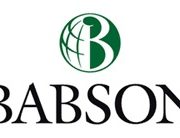CLARIFYING THE SELLER’S GOALS AND REALISTIC EXPECTATIONS
Sell transactions require open communication between the seller and M&A advisor to navigate challenges along the way and produce a “close”. Even good “deals” may be derailed by “surprises”. In order to survive the process and move to closing, seller’s goals must be aligned with realistic expectations.
Maximizing the sale price may be the underlying intent on the sell-side of M&A transactions; however, it is not always the only objective of the seller. Many times there are more important economic and non-economic goals that must be understood by the M&A advisor. Goals that may include:
- Use of seller/company owned facilities
- Stock or asset sell
- Seller retirement or employment
- Status of key employees or family members in the business
- Use of company name
Clarifying the seller’s goals needs to be well understood by the M&A advisor. There should be no uncertainty between the seller and the advisor during the sell process. Realistic expectations can be set, and a customized plan can be established to achieving or exceeding the seller’s goals.







